Cities , 1999
REMIX BUILDINGS
Converge real death with fictional death.
Photo drawing.
Fiction touches reality in this building that combines the essence of a movie theatre and a clinic. The certainty of death, re-enacted in film and physically encountered in the emergency room, is inscribed in an ethereal space of both movement and immobility. Pain, illness and death are no longer screened; imagination and sensation join under one roof for a full experience of the human condition: we watch as we die, we die as we watch.
AUTOBAHN WITH MEMORIAL (Berlin, 1999)
The apparent incongruity of a memorial inscribed with the lines of a motorway points to the inherent paradox of static names which the viewer can only decipher when standing still. Memorials and the inscriptions they bear are intrinsically linked to the notion of time, past and present, of the time we take to read about the end of someone else’s time. When confronted with a moving subject in time and space they bridge the points of departure and arrival of the beholder’s journey and the stranger’s past existence. As they slow down, drivers experience themselves as travellers through their own lives.
CUPBOARD FOR THREE REFUGEES (Barcelona, 1999)
Photo drawing. Programme: mix domestic furniture and illegal people. Travessera de Dalt, Barcelona.
Designed to serve as a functional shelter for three refugees, this toy-like structure floats between the safe world of dolls and the dark spots of real life. The cupboard speaks of the living conditions of emigrants as well as the deliberate omissions in children’s education.
CREMATORIUM WITH 24H WARM SPACE (Paris, 1999)
Photo drawing. Beaubourg, Paris.
The most prominent meeting place in Paris is warmed by heat conveyed from a crematorium. Couples, pickpockets, business people, friends and tourists meet on the transparent platform. Beaubourg has now also become the city’s only free warm space. Drug users were asked not to consume here.
METRO WITH CEMETERY (Paris, 1999)
Photo drawing. Programme: integrate death into daily life, cultivate new aesthetics for death.
Walking through the corridors of the Châtelet metro station in Paris, busy travelers halt to look at the names of recently deceased people. The urns are encased in a stylish wall alongside a larger- than-life Dior advertisement. Sleek aesthetics play an essential part in the articulation of this underground environment.
ANOREXIC CENTER (Amsterdam, 2000)
Photo drawing. Programme: to make people with anorexia feel free of gravity
The lightweight architecture of this institution is sensitive to its inmates’ foremost desire. The centre for anorexic people brings the psychological state of the patients into the open and participates in their endeavour to detach themselves from the physical weight of their bodies.
IMMUNITY SQUARE (Amsterdam, 2000)
Photo drawing. Programme: the reflection of the Royal Palace creates a territory of immunity
The shadow of the palace casts its authority on the Dam. The periphery of Amsterdam’s central square marks a territory of diplomatic immunity. From now on, illegal immigrants may seek temporary asylum in the heart of the city. By order of the Queen, nobody who reaches this open embassy will be bothered by the authorities.
MOVING HOUSE FOR PARAPLEGICS (London, 2000)
Elevators, escalators, rotating restaurants: mobility in architecture is primarily implemented for the comfort of the physically able. This model focuses on the physical constraints of paraplegics and the psychological dismay these entail. It does not pretend to be a substitute for the irretrievable loss of movement, but visibility and movement reflect the sensations of the life outside and inside.
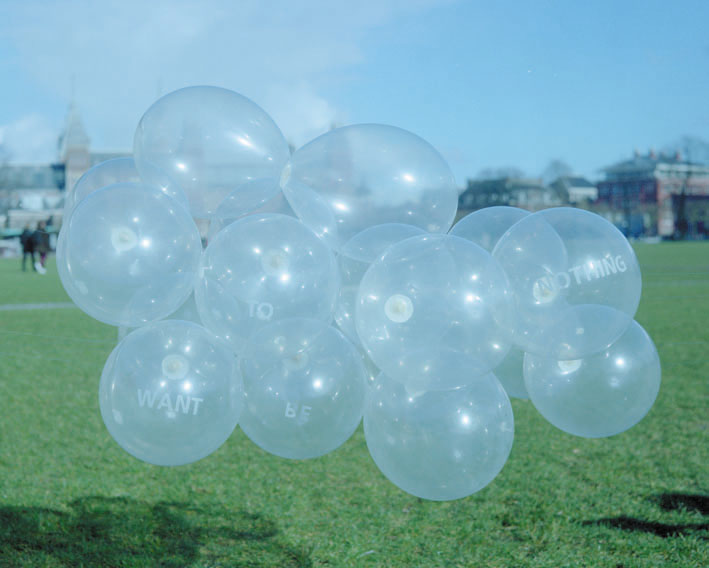
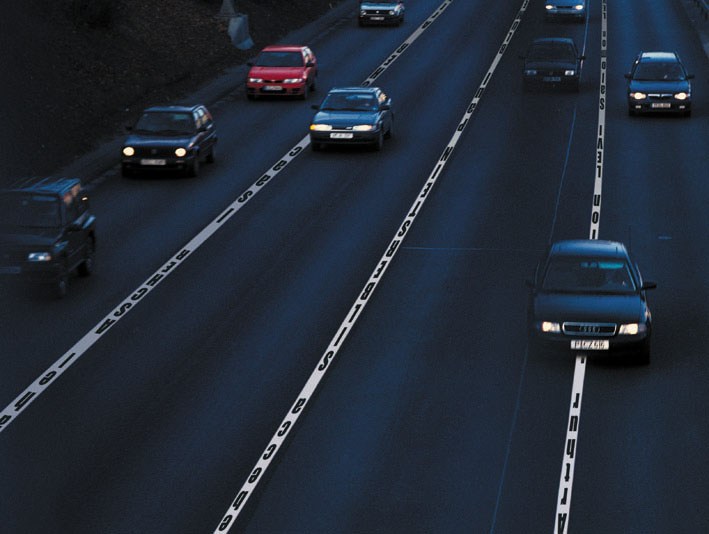
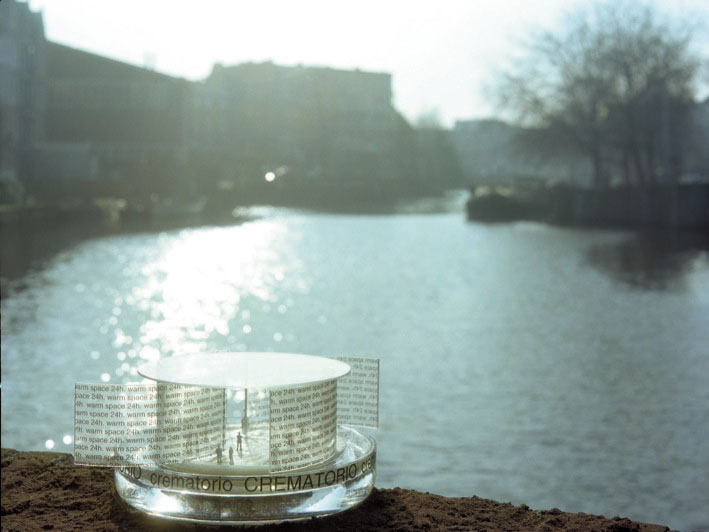
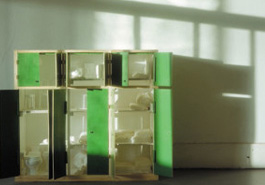
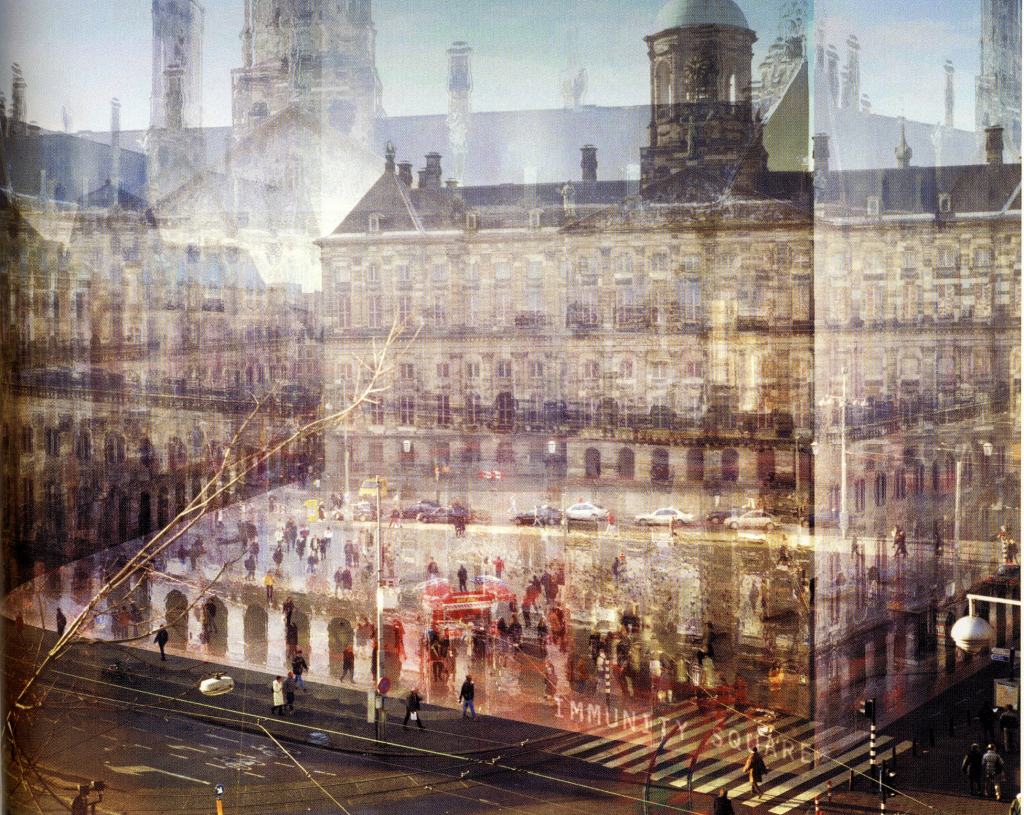
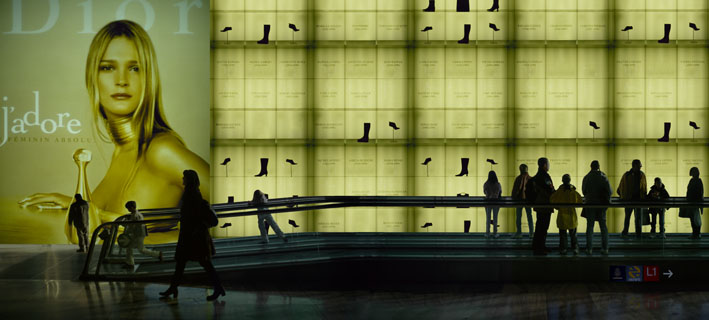
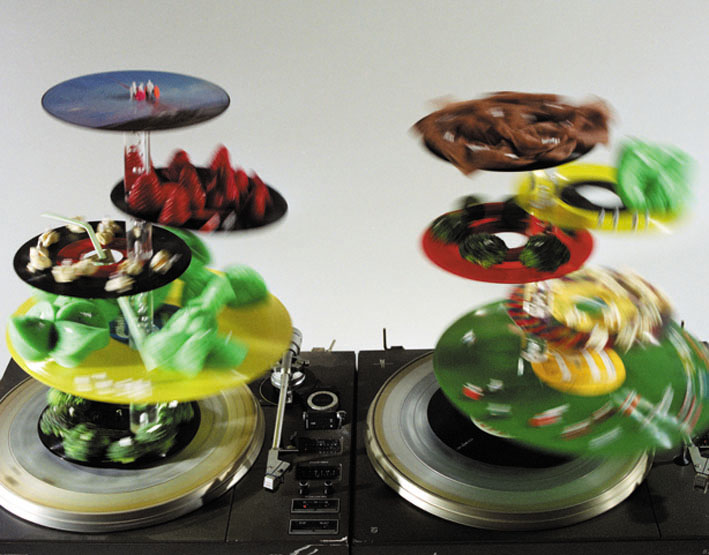
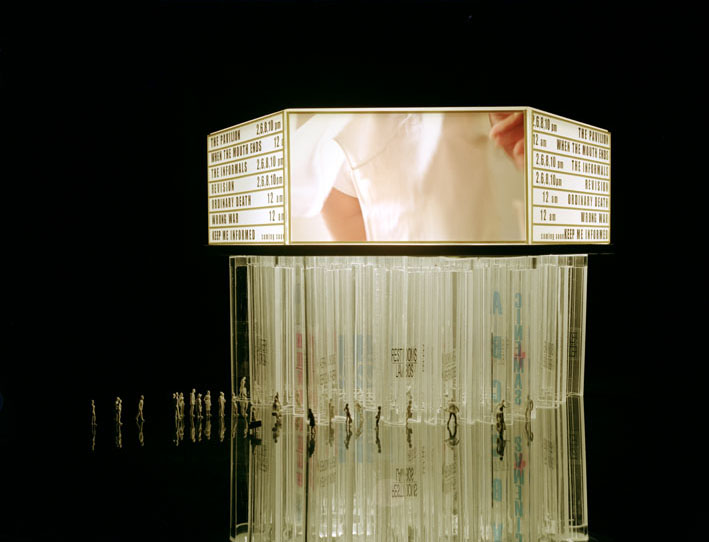
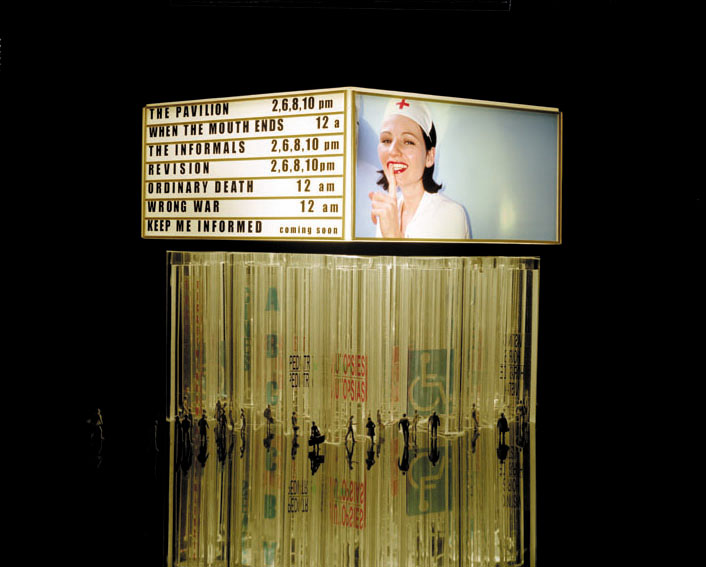
Fiction touches reality in this building that combines the essence of a movie theatre and a clinic. The certainty of death, re-enacted in film and physically encountered in the emergency room, is inscribed in an ethereal space of both movement and immobility. Pain, illness and death are no longer screened; imagination and sensation join under one roof for a full experience of the human condition: we watch as we die, we die as we watch.
AUTOBAHN WITH MEMORIAL (Berlin, 1999)
The apparent incongruity of a memorial inscribed with the lines of a motorway points to the inherent paradox of static names which the viewer can only decipher when standing still. Memorials and the inscriptions they bear are intrinsically linked to the notion of time, past and present, of the time we take to read about the end of someone else’s time. When confronted with a moving subject in time and space they bridge the points of departure and arrival of the beholder’s journey and the stranger’s past existence. As they slow down, drivers experience themselves as travellers through their own lives.
CUPBOARD FOR THREE REFUGEES (Barcelona, 1999)
Photo drawing. Programme: mix domestic furniture and illegal people. Travessera de Dalt, Barcelona.
Designed to serve as a functional shelter for three refugees, this toy-like structure floats between the safe world of dolls and the dark spots of real life. The cupboard speaks of the living conditions of emigrants as well as the deliberate omissions in children’s education.
CREMATORIUM WITH 24H WARM SPACE (Paris, 1999)
Photo drawing. Beaubourg, Paris.
The most prominent meeting place in Paris is warmed by heat conveyed from a crematorium. Couples, pickpockets, business people, friends and tourists meet on the transparent platform. Beaubourg has now also become the city’s only free warm space. Drug users were asked not to consume here.
METRO WITH CEMETERY (Paris, 1999)
Photo drawing. Programme: integrate death into daily life, cultivate new aesthetics for death.
Walking through the corridors of the Châtelet metro station in Paris, busy travelers halt to look at the names of recently deceased people. The urns are encased in a stylish wall alongside a larger- than-life Dior advertisement. Sleek aesthetics play an essential part in the articulation of this underground environment.
ANOREXIC CENTER (Amsterdam, 2000)
Photo drawing. Programme: to make people with anorexia feel free of gravity
The lightweight architecture of this institution is sensitive to its inmates’ foremost desire. The centre for anorexic people brings the psychological state of the patients into the open and participates in their endeavour to detach themselves from the physical weight of their bodies.
IMMUNITY SQUARE (Amsterdam, 2000)
Photo drawing. Programme: the reflection of the Royal Palace creates a territory of immunity
The shadow of the palace casts its authority on the Dam. The periphery of Amsterdam’s central square marks a territory of diplomatic immunity. From now on, illegal immigrants may seek temporary asylum in the heart of the city. By order of the Queen, nobody who reaches this open embassy will be bothered by the authorities.
MOVING HOUSE FOR PARAPLEGICS (London, 2000)
Elevators, escalators, rotating restaurants: mobility in architecture is primarily implemented for the comfort of the physically able. This model focuses on the physical constraints of paraplegics and the psychological dismay these entail. It does not pretend to be a substitute for the irretrievable loss of movement, but visibility and movement reflect the sensations of the life outside and inside.